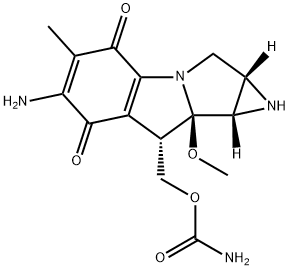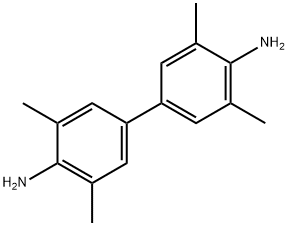Tetramethylpyrazine
- CAS NO.:1124-11-4
- Empirical Formula: C8H12N2
- Molecular Weight: 136.19
- MDL number: MFCD00006146
- EINECS: 214-391-2
- SAFETY DATA SHEET (SDS)
- Update Date: 2025-01-27 09:38:02

What is Tetramethylpyrazine?
Description
2,3,5,6-Tetramethylpyrazine is an alkaloid that has been found in L. wallichii and has diverse biological activities. It reduces kainate-induced increases in production of reactive oxygen species (ROS) and cytotoxicity in primary rat hippocampal neurons when used at a concentration of 5 μM. 2,3,5,6-Tetramethylpyrazine (0.1 mM) induces vasodilation in precontracted isolated and endothelium-denuded rat tail artery strips and reduces blood pressure in anesthetized rats. It decreases infarct volume, caspase-3 activation, and hypoxia-inducible factor-1α (HIF-1α) levels in a rat model of focal cerebral ischemia induced by middle cerebral artery occlusion (MCAO) when administered at a dose of 20 mg/kg.
Description
Ligustrazine is an alkaloid derived from chuanxiong (Ligusticum chuanxiong
Hort; L. wallichii). Ligusticum wallichii Franchat (or Ligusticum chuanxiong Hort;
L. wallichii), a member of the Umbelliferaceae family, is a Chinese medicinal herb
that is a common constituent in polypharmaceutical herbal drugs. It has been widely
used in Asian countries to increase coronary blood flow and systemic circulation
and to relieve stasis.
Ligusticum walliichi has the effects of promoting Qi and nourishing blood.
Ligusticum walliichi, angelica, and peony were used as medicinal herbs, and thecommonly used Yangxue Siwu decoction was proposed for clinical practice. The
combination of gypsum and Ligusticum walliichi can clear lung heat and eliminate
cough and asthma. It is a common drug for clearing away heat and toxic substances
and purging fire. The compatibility of Ligusticum walliichi and Radix Linderae can
regulate the blood and Qi and treat women’s headaches and colds and retrograde
and other related pains.
Ligusticum walliichi is warm, acrid, and bitter. It can regulate the blood and conduct Qi, which is commonly used in oral administration. Ligusticum walliichi is
used to treat apoplexy, headache, cold pain, the upper reaches of the wind, tears
clogging of nose by cold, and so on. At present, the study of Chuanxiong in China
and abroad has occurred at the molecular level .
Chemical properties
white crystals or powder
Chemical properties
2,3,5,6-Tetramethylpyrazine has musty, fermented, coffee odor
Physical properties
Appearance: colorless needle crystal. Solubility: soluble in hot water, petroleum ether, chloroform, dilute hydrochloric acid, slightly soluble in ether, insoluble in cold water. Melting point: 77–80°C. Boiling point: 190°C. Flash point: 128– 130°C/200mm. Ligustrazine has a particular odor, moisture absorption, and sublimation.
Occurrence
Reported found in French fried potato, bell pepper, wheat bread, emmental cheese, Swiss cheese, Camembert cheese, Gruyere cheese, boiled and cooked beef, grilled and roasted beef, fried beef, cooked lamb and mutton, lamb and mutton liver, grilled and roasted uncured pork, beer, black tea, green tea. Also reported present in cocoa products, coffee, dairy products, oatmeal, galbanum oil, roasted peanuts, soybean, beans, mushroom, trassi, coriander seed, rice bran, trassi, sukiyaki, soy sauce, malt, licorice, dried bonito, wild rice, shrimp, crab, clam, scallop, filberts, rum, sake, wine, whiskey, burley tobacco and soy products.
History
Ligusticum walliichi has a long medicinal history in China and is used in the treatment of headache, promoting blood and Qi circulation, curing chills and alleviating
pain”. Clinically, it is mainly used for the treatment of cardiovascular and cerebrovascular diseases. Ligustrazine (2,3,5,6-tetramethylpyrazine) is the main active
ingredient of Ligusticum walliich. It was first isolated in 1962 .
In recent years, studies have found that ligustrazine can inhibit the activity of the
cerebral cortex and medullary respiratory center, excite vasomotors, induce the
expansion of peripheral blood vessels, promote the blood flow of the coronary artery
and lower limbs, and reduce blood pressure. Ligustrazine can also paralyze the
nerve center and has sedative and analgesic effects.
Studies have suggested that ligustrazine has a variety of new effects, including
improving leptomeningeal and peripheral microcirculation and increasing cerebral
blood flow, and its effect is better than that of papaverine. Ligustrazine can also
protect against experimental cerebral ischemia and alleviate brain edema and the
deposition of fibrin in microvessels. Ligustrazine is also used in the treatment of
pulmonary heart disease, heart failure, dilated heart disease, portal hypertension,
type II diabetes mellitus, tumor and coronary heart disease, and restenosis after
stent implantation .
The Uses of Tetramethylpyrazine
etramethylpyrazine is an anti-inflammatory compound isolated from the fermented food natto. Tetramethylpyrazine demonstrated in vivo nootropic activity in rats.
The Uses of Tetramethylpyrazine
Usually used in research and treatment of multiple disorders.
The Uses of Tetramethylpyrazine
2,3,5,6-Tetramethylpyrazine may be used as an analytical reference standard for the quantification of the analyte in Ephedrae herba and Ephedra sinica Stapf using different chromatography techniques.
Definition
ChEBI: A member of the class of pyrazines that is pyrazine in which all four hydrogens have been replaced by methyl groups. An alkaloid extracted from Chuanxiong (Ligusticum wallichii).
Preparation
From2,5-dimethylpyrazine by ring alkylationwithMeLi; also by condensation of 2,3-butanedionewith 2,3-butanediamine.
Indications
Ligustrazine is used for occlusive vascular diseases, cerebral thrombosis, vasculitis, coronary heart disease, angina pectoris, and others
Aroma threshold values
Detection: 1 to 10 ppm. Aroma characteristics at 1.0%: slightly musty, nutty, cocoa-like with a vanilla undernote
Taste threshold values
Taste characteristics at 10 ppm: weak, nutty, musty cocoa and chocolate-like with dry coffee nuances.
General Description
2,3,5,6-Tetramethylpyrazine has been isolated from Ephedra sinica. It is useful in the treatment of several disorders such as asthma, heart failure, rhinitis and urinary incontinence. It is a flavor ingredient of tobacco. It forms cocrystal with 4-hydroxybenzoic acid which exhibits supramolecular synthon polymorphism.
Pharmacology
Traditional Chinese medicine has some advantages in comprehensive treatment
under multisite, multitarget conditions and overall regulation. Ligustrazine can
inhibit phosphodiesterase activity and inhibit platelet aggregation. It has the typical
characteristics of a calcium antagonist and can adjust the release of various vasoactive substances against the vasoconstrictive action of the sympathetic nerve, improve
microcirculation, reduce red blood cell aggregation, shorten the erythrocyte electrophoresis time, and thereby reduce blood viscosity .
Ligustrazine can inhibit the proliferation of vascular endothelial cells induced by
vascular endothelial growth factor, which may be one of the mechanisms by which
angiogenesis is inhibited. The mechanism by which ligustrazine inhibits the proliferation of vascular endothelial cells may be through calcium ion retardation, inhibition of cell adhesion molecules, or through the antagonistic or synergistic effects of
some growth factors involved in the proliferation and angiogenesis of vascular
endothelial cells
Studies have shown that ligustrazine plays a role in resistance to ischemiareperfusion injury and antiapoptotic effects via the phosphatidylinositol 3- kinase/
protein kinase B (PI3K/Akt) pathway. The phosphorylation of endothelial nitric oxide
synthase (eNOS) and generation of nitric oxide (NO) are important downstream effectors, which significantly enhance the myocardial protective effects of ligustrazine.
one of the mechanisms of resistance to fibrosis .
Clinical Use
The main clinical formulation of ligustrazine is ligustrazine hydrochloride injection.
Ligustrazine hydrochloride injection was used to prevent restenosis following coronary stent implantation and to treat acute coronary syndrome and ischemic stroke.
Ligustrazine hydrochloride injection is helpful in alleviating pulmonary hypertension in patients with pulmonary heart disease. The therapeutic effect of ligustrazine
hydrochloride injection on severe cholestatic liver cirrhosis caused by chronic heart
failure of rheumatic heart disease is remarkable. In addition, ligustrazine is widely
used in the treatment of vertigo syndrome, vertebrobasilar insufficiency, tension
headache, and so on. It has a good symptomatic-treatment effect .
Ligustrazine is also reported for the treatment of children with viral myocarditis,
chronic renal failure, hepatic fibrosis, portal hypertension, tumors, and diabetic
nephropathy. Ligustrazine can relieve symptoms rapidly, and its effect is stable and
lasting. It has good clinical promotion value .
Safety Profile
Poison by intravenous and intraperitoneal routes. Moderately toxic by ingestion. When heated to decomposition it emits toxic fumes of NOx.
Properties of Tetramethylpyrazine
| Melting point: | 77-80 °C(lit.) |
| Boiling point: | 190 °C(lit.) |
| Density | 1.08 |
| refractive index | 1.5880 (estimate) |
| FEMA | 3237 | 2,3,5,6-TETRAMETHYLPYRAZINE |
| Flash point: | 128-130°C/200mm |
| storage temp. | Sealed in dry,Room Temperature |
| solubility | 4g/l |
| form | neat |
| pka | 3.20±0.10(Predicted) |
| form | Solid |
| color | White to Off-White |
| Odor | at 10.00 % in dipropylene glycol. nutty musty chocolate coffee cocoa brown lard burnt |
| Water Solubility | Soluble in water (4 g/L at 20°C). |
| JECFA Number | 780 |
| BRN | 113100 |
| Stability: | Stable. Incompatible with strong acids, strong oxidizing agents. |
| CAS DataBase Reference | 1124-11-4(CAS DataBase Reference) |
| NIST Chemistry Reference | Pyrazine, tetramethyl-(1124-11-4) |
| EPA Substance Registry System | Tetramethylpyrazine (1124-11-4) |
Safety information for Tetramethylpyrazine
| Signal word | Warning |
| Pictogram(s) |
 Exclamation Mark Irritant GHS07 |
| GHS Hazard Statements |
H302:Acute toxicity,oral H315:Skin corrosion/irritation H319:Serious eye damage/eye irritation H335:Specific target organ toxicity, single exposure;Respiratory tract irritation |
| Precautionary Statement Codes |
P261:Avoid breathing dust/fume/gas/mist/vapours/spray. P264:Wash hands thoroughly after handling. P264:Wash skin thouroughly after handling. P270:Do not eat, drink or smoke when using this product. P301+P312:IF SWALLOWED: call a POISON CENTER or doctor/physician IF you feel unwell. P302+P352:IF ON SKIN: wash with plenty of soap and water. P305+P351+P338:IF IN EYES: Rinse cautiously with water for several minutes. Remove contact lenses, if present and easy to do. Continuerinsing. |
Computed Descriptors for Tetramethylpyrazine
| InChIKey | FINHMKGKINIASC-UHFFFAOYSA-N |
Tetramethylpyrazine manufacturer
New Products
Tetrabutylammonium iodide (3,3-DIFLUOROCYCLOBUTYL)METHANOL 4,4-DIFLUOROCYCLOHEXANAMINE Cyclobutylamine (S)-3-Fluoro-pyrrolidine hydrochloride 3-Oxocyclobutanecarboxylic acid N-Hydroxy-2-methylpropanimidamide L-tert-Leucine,97% 2-Bromophenylacetonitrile, 97% Aluminum oxide, basic Calcium hydroxide, 95% Diallylamine, 99% 2-Iodobenzoic Acid 3-Methoxybenzonitrile Pentachlorobenzonitrile Chloral Dibenzoyl Peroxide Titanium Dioxide O-Benzylhydroxylamine Hydrochloride 2-Nitrobenzaldehyde 2-Picolylamine (2-Aminomethylpyridine) 2-Venylpyridine Ethyl-2-Chloroacetoacetate 4-Dimethylamine PyridineRelated products of tetrahydrofuran








You may like
-
 1124-11-4 2,3,5,6-TETRA METHYL PYRAZINE 98%View Details
1124-11-4 2,3,5,6-TETRA METHYL PYRAZINE 98%View Details
1124-11-4 -
 1124-11-4 98%View Details
1124-11-4 98%View Details
1124-11-4 -
 Tetramethyl pyrazine 98%View Details
Tetramethyl pyrazine 98%View Details
1124-11-4 -
 Tetramethyl pyrazine 1124-11-4 98%View Details
Tetramethyl pyrazine 1124-11-4 98%View Details
1124-11-4 -
 2,3,5,6-Tetramethylpyrazine CAS 1124-11-4View Details
2,3,5,6-Tetramethylpyrazine CAS 1124-11-4View Details
1124-11-4 -
 2,3,5,6-Tetramethylpyrazine CAS 1124-11-4View Details
2,3,5,6-Tetramethylpyrazine CAS 1124-11-4View Details
1124-11-4 -
 2,3,5,6-Tetramethylpyrazine CAS 1124-11-4View Details
2,3,5,6-Tetramethylpyrazine CAS 1124-11-4View Details
1124-11-4 -
 TETRABUTYLAMMONIUM CYANIDE 10442-39-4 98+View Details
TETRABUTYLAMMONIUM CYANIDE 10442-39-4 98+View Details
10442-39-4
